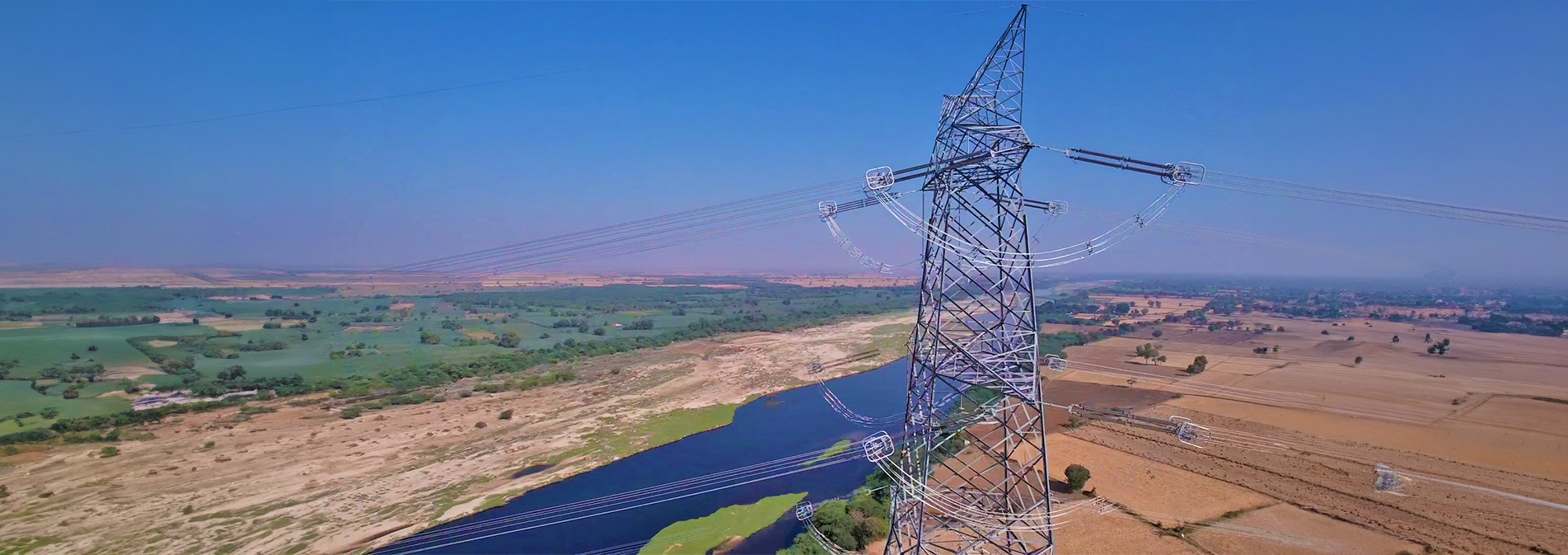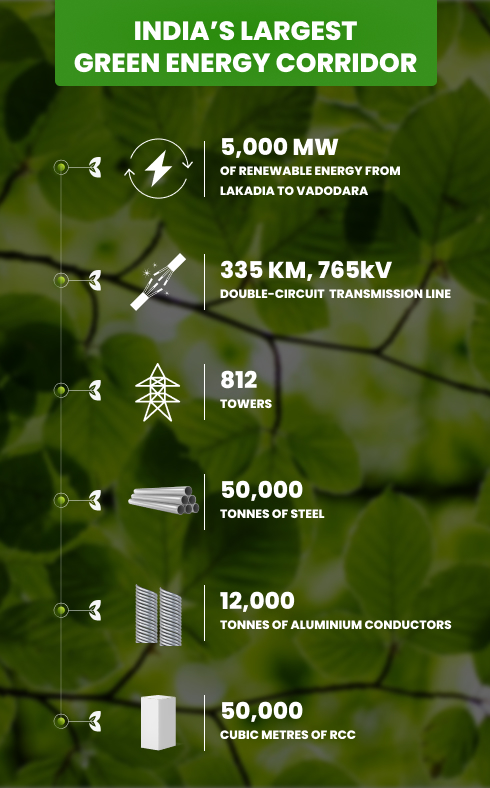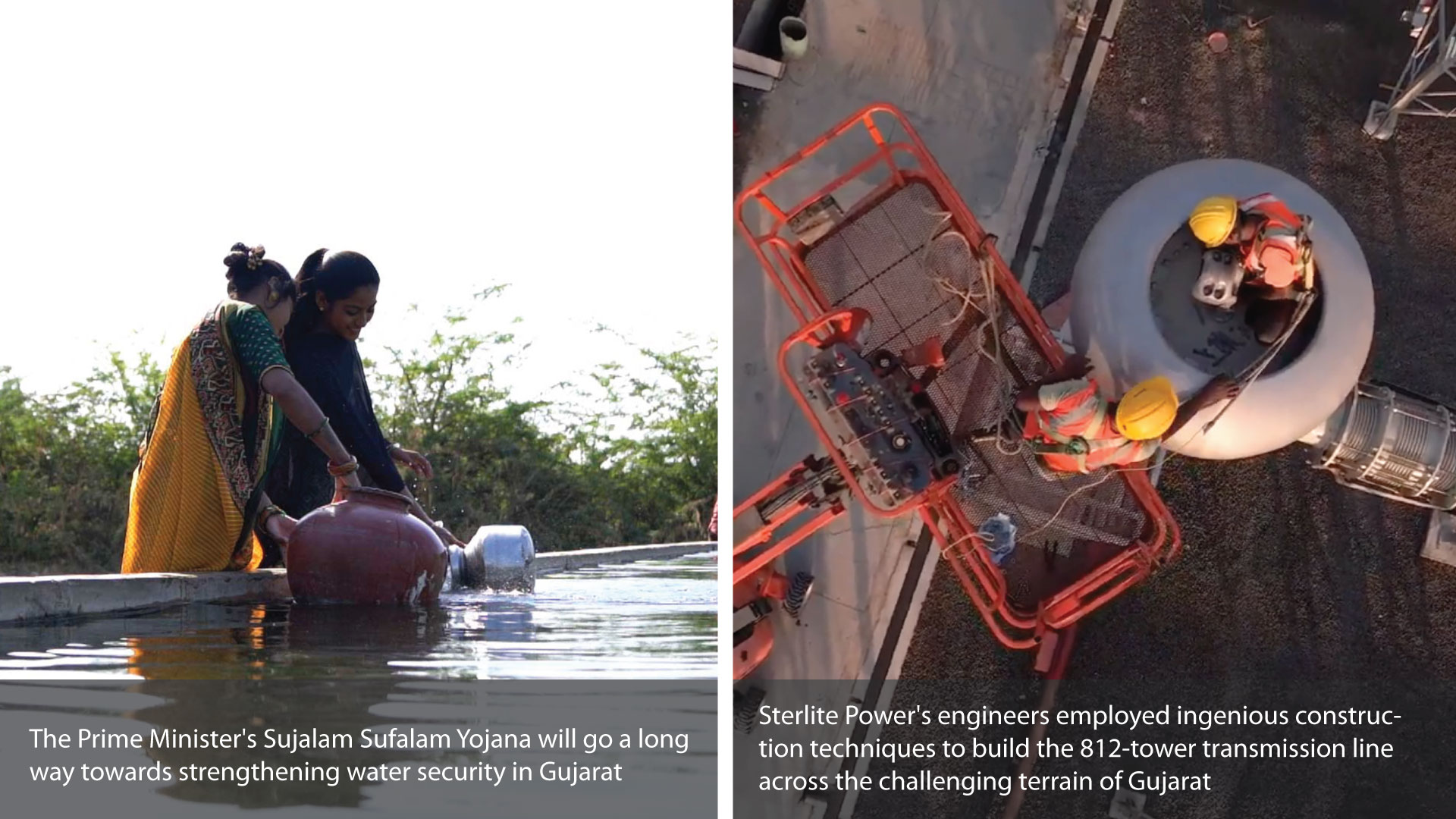
By 2030, India aims to fulfil over half of its energy requirements through renewable sources. This translates to 500 GW of renewable energy, a tall order that demands infrastructure development at an unprecedented pace. This ambitious journey to net zero by 2070 necessitates the greening of India’s national grid which will ensure the true realisation of India’s energy transition dreams.
To accelerate this ambitious vision, Sterlite Power brought one of India’s largest green energy corridors to life – the Lakadia-Vadodara Transmission Project Limited (LVTPL).
Ushering in a new era of clean energy
Originating in Lakadia, the LVTPL project is a mega 335 km-long, 765 kV double-circuit transmission line stretching across seven districts of Gujarat. It ends at the industrial hub in Vadodara.
Contributing an astounding 5,000 MW of clean, green power to India’s national energy grid, the significance of this project cannot be overstated. This project is an integral part of the 30,000 MW hybrid renewable energy park coming up in Kutch, Gujarat.
Awarded to Sterlite Power in 2019, this transmission corridor was built with an investment of INR 2,024 crore. Its sheer size, scale and impact earned it the distinction of being among the five prestigious infrastructure projects reviewed by the Prime Minister’s Office as part of the PRAGATI platform.
But what went into constructing this 812-tower-long green energy corridor?

Creatively overcoming obstacles
Barely a month into the project, the Covid-19 lockdown was announced. While construction remained unaffected, stringent measures were taken to ensure the safety and well-being of all employees. But Covid turned out to be just the first of many challenges.
Given that Lakadia sits on salt plains, the soil was not suitable for construction, which called for unique techniques to build a transmission line that would stand the test of time. The high-water table in the area did not allow the construction of towers. This problem was dealt with using the well point system technique, wherein the water was pumped out to enable construction. Since the water level was high, specialised paint was applied to the towers for prolonged longevity.
Spanning 335 km, the LVTPL corridor had to traverse multiple expressways and highways. The engineers had to devise ways to continue construction without disrupting traffic. The line also spans water bodies, the longest crossing being a 660-metre stretch over the Mahi River, one of the longest rivers in Gujarat. To conquer this obstacle, the engineers skilfully employed a river crossing solution to ensure seamless movement and bring the project to completion.
A responsible approach to development
As an organisation committed to sustainable development, Sterlite Power made a substantial contribution to the Sujalam Sufalam Yojana (SSY), a Prime Minister’s scheme aimed at championing water security in the northern parts of Gujarat. As part of this national scheme, more than 12 lakh people benefitted from clean drinking water, in alignment with Sterlite Power’s commitment to positively impact the communities in which it operates. Sterlite Power has also taken utmost care to obtain necessary clearances and minimise the project’s impact on wildlife.

With the commissioning of LVTPL, India accelerates its journey towards achieving its ambitious 500 GW target. Beyond the promise of a sustainable future, LVTPL has the power to transform the lives of millions by providing affordable, uninterrupted electricity.
As the world moves towards a greener and cleaner future, Sterlite Power remains committed to leading with its core purpose of “Empowering Humanity by Addressing the Toughest Challenges of Clean Energy Delivery”.